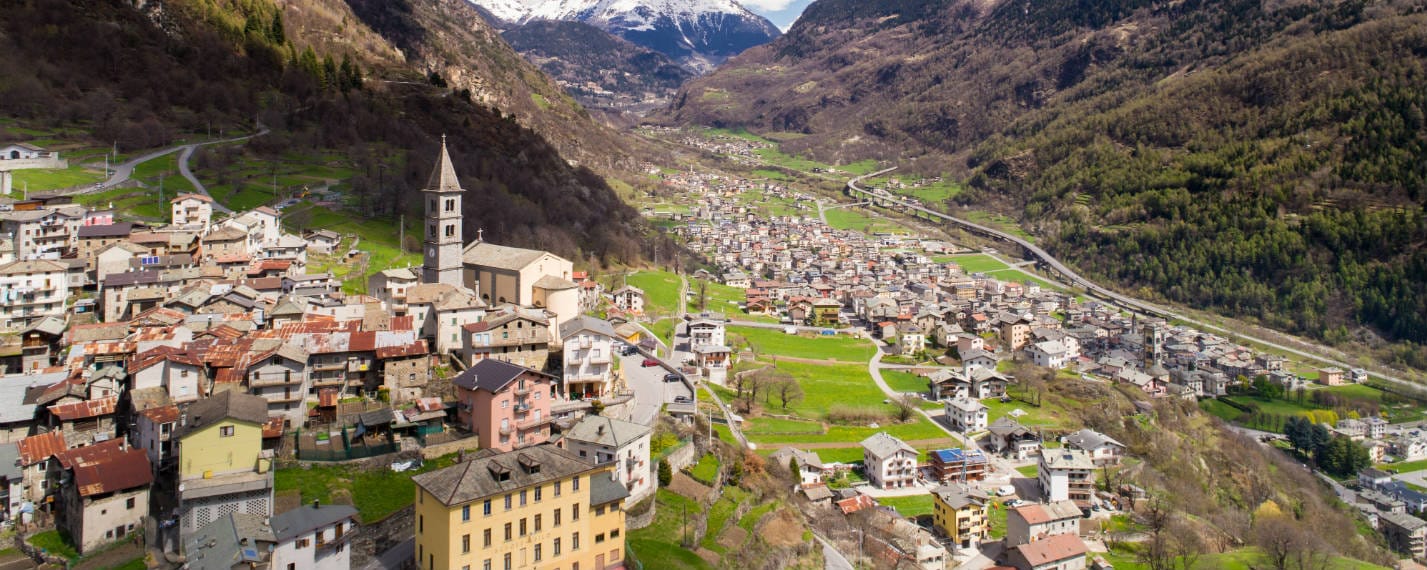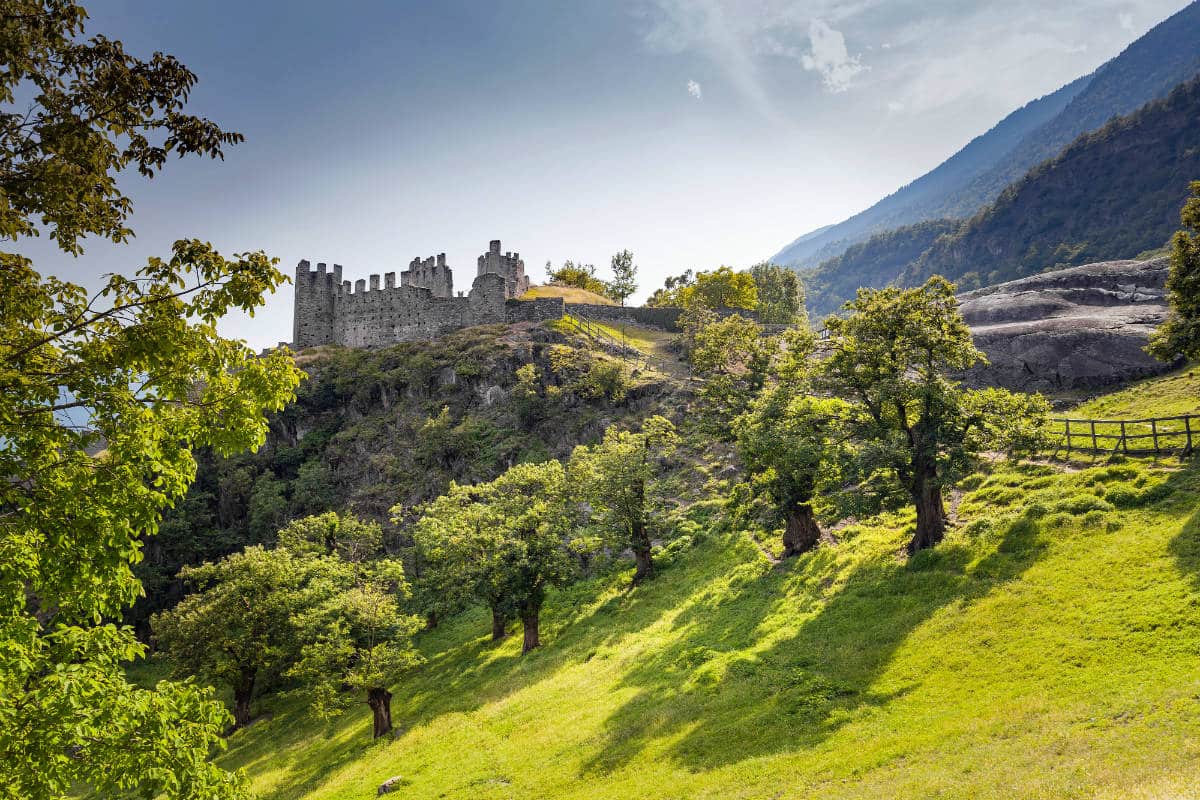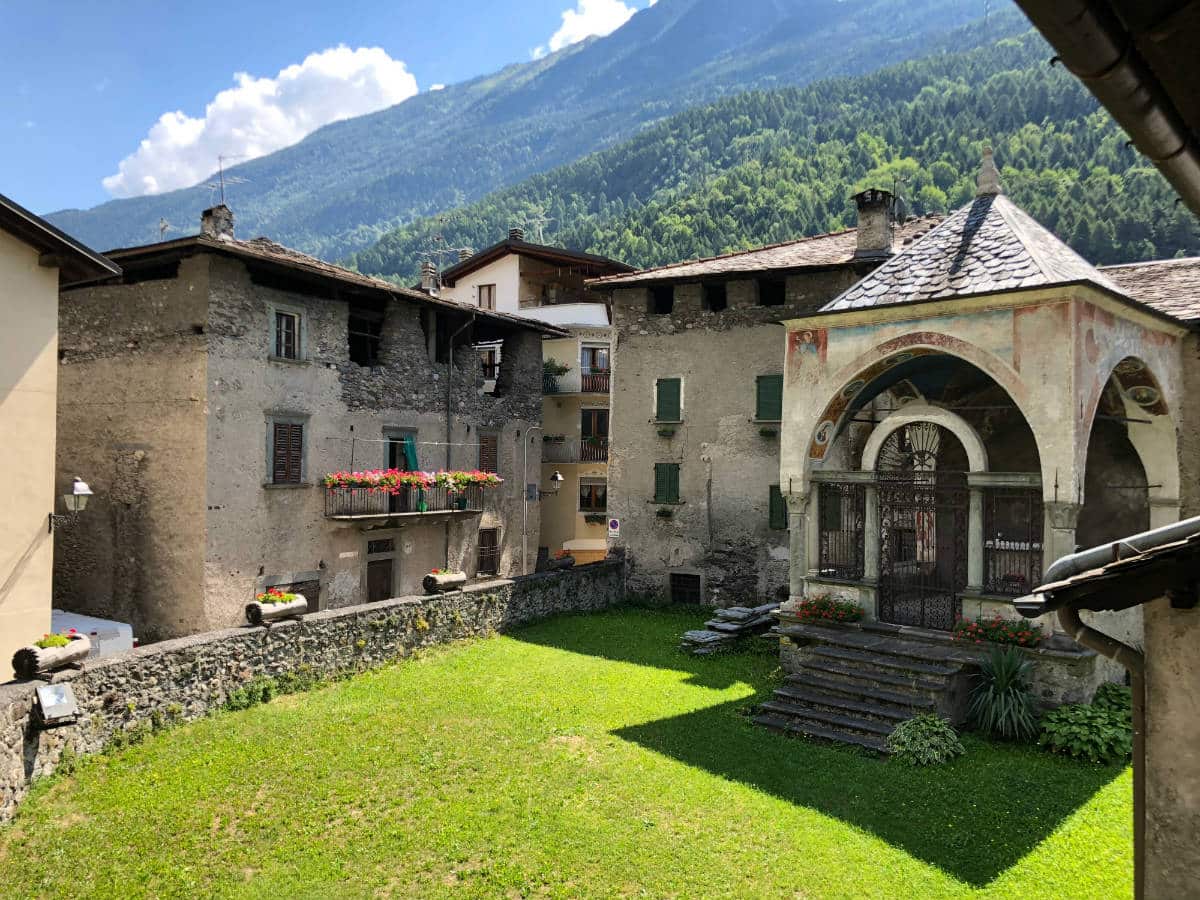Those who love the Valtellina, but do not know the hidden secrets, could take advantage of Easter Monday to take a trip of nature and history in the ancient village of Grosio, a few kilometers away from the most famous Tirano. On the state road that leads to Bormio, in fact, just before the tunnels that form the antechamber to the Alta Valtellina, stands this small mountain village that is noticed by motorists especially for its manor, the New Castle, located on the top of a hill set between the valley of the Roasco torrent and that of the Adda and belonged to the Visconti family in 1500.
If you immediately notice the series of agricultural terraces (very similar to those in Liguria) surrounded by dry-stone walls that surround the hill, only those who decide to stop in Grosio will be able to discover the most remote roots of the Valtellina: behind the New Castle The remains of another still more ancient castle, that of San Faustino, dating back to 1100, lie as jealously guarded. Some ruins remain of this fortress, including the Romanesque bell tower belonging to the Castellana Church of Saints Faustino and Giovita, which preserves, in the center of the presbytery, two medieval tombs carved into the rock.

Our journey to discover the remote roots of the Valtellina begins right here, from Dosso dei Castelli, where the Rock Engravings Park develops, which represents the most exhaustive testimony of the ancient local populations. Established in 1978 by a consortium composed of the Province of Sondrio, the Mountain Community of Tirano and the municipalities of Grosotto and Grosio, thanks to the donation of the lands and medieval remains by the marquise Margherita Pallavicino Mossi Visconti Venosta, the park stands as main purpose the enhancement of the rocks with incisions, including the Rupe Magna.
Discovered in 1966, the Rupe Magna is one of the largest rocks of the entire Alpine arc, with over 5,000 depictions dating from the end of the Neolithic and the Iron Age. The engravings tell the everyday life of the Valtellina ancestors, through the representation of rupestrian instruments, such as cupels and rakes, of anthropomorphic figures, of animals and also of medieval crosses. According to scholars, most of the engravings were made with the technique called “a martellina”, obtained by tapping the rocky surface with a stone striker, thus creating small circular concavities.

Grosio, however, holds more than just this archaic and mystical charm. The village is situated in an impressive landscape area. Behind the village, in fact, rise the Rhaetian Alps, in the midst of which the Val Grosina takes its course, perhaps little known but ideal for hiking or mountain biking tours, among sacred buildings, churches, shrines, chapels and huts. Stop for a break in Malghera, at an altitude of 1958 meters: here is the Sanctuary of the Madonna del Muschio, built in the 1920s following a miracle event that occurred in these parts. Also worth a visit are the church dedicated to Our Lady of Lourdes in Eita and the small church of St. Anthony in Biancadino. In short, if you are in Valtellina and pass through Grosio, you will be able to rediscover the past of the Valtellina people through the presence of precious remains and breathe in the typical mountain atmosphere. A day of relaxation, out of more touristically congested areas, such as the beautiful Bormio and Livigno, and immersed in total peace.


0 Comment